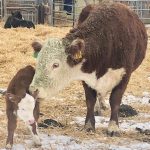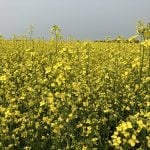
Cow-Calf

Creep feeding shows a profit in 2023
It may be well worth your while to get an extra 60 pounds of gain on this year’s calves

Preventing frothy bloat on early spring pasture
A couple of treatments are available, but management practices can avoid the problem

Weather didn’t co-operate for calving beef cows
Rancher's Diary: After a short labour, a new great-granddaughter is welcomed into the family

Klassen: Feeder market remains firm on fed cattle strength
Alberta's disastrous wildfires may disrupt calf marketings

Winter shelters have saved calves
Having protection from wet and wind made a difference, even under extreme weather and low temperatures

What makes the difference during calf transportation?
Is it the trucking itself, or are there other factors that affect the health and well-being of calves?

How to avoid scours getting at your calves
Several factors to hopefully reduce the impact of disease development

Calving season begins
Eppich News: A new (to us) bale processor repaired and put to good use

Bovine respiratory disease events may have a long-lasting effect
Early cases of bacterial infection could affect performance of replacement heifers

Grafting a calf made for a happy pair
It wasn't the usual orphan calf scenario, but the cow and calf finally bonded


